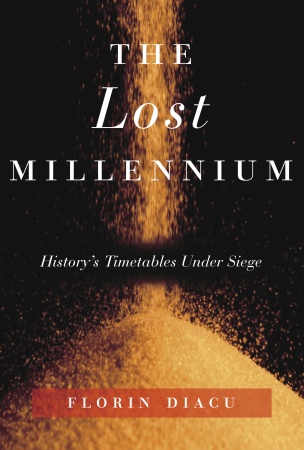
undefined
The Lost Millennium
History’s Timetables Under Siege
By Florin Diacu,
Knoff Canada,
Random House,
Canada, 2005
Printed in the USA
300 pages
A Book Review
Strangely, Diacu spends a great deal of time in the first chapter recounting the history of Immanuel Velikovsky’s writing and publishing the books “Words in Collision” and “Ages in Chaos.” He demonstrates that traditional science reacted strongly against Velikovsky’s ideas, until his name was eventually discredited. He demonstrates that when a new theory is presented it can be thrown out if one major part of the theory fails. Building on the way that Velikovsky stimulated thinking, Diacu moves on.
Chapter two is an excellent review of the history of chronology. Interestingly enough, chronologies and king lists of various kingdoms have always existed, but Diacu believes that it wasn’t until Joseph Justus Scaliger (1540-1609) that a scientific and systematic system was proposed that applied dates to these chronologies. Before Scalieger, Ephorus (504-330BC) showed a keen interest in dating events, but only fragments of his work survive. Julius Africanus (160-240 AD) is often called the first true Chronologist and the father of biblical history, and used a dating system from Abraham forward. (Year of Abraham) Theophilus of Antioch (AD 115-180) also produced a brief chronology of the Bible. Georgius Syncellus (early ninth century) of Constantinople wrote a chronicle of universal history. Martin Luther (1483-1546) also published a chronology book, along with many others.
Diacu then switches back to Joseph Scaliger and focuses on his attempts at writing a historical chronology. Scaliger is important because he used astronomy to establish a number of important dates such as the first Olympiad and the writing of the Almagest, Ptolemy’s famous astronomy treatise from the second century AD. This system was later amended by Petavius and became the basis of the chronology of time that is commonly accepted today.
Down through history however, there have been those who have challenged commonly accepted chronology. Diacu introduces us to Kicolai Aleksandrovich Morozov (1854-1946) who first claimed that historical chronology was wrong by a thousand years. In the 1970’s a Russian mathematician Mikhail Postnokov revived Morozov’s ideas. He was followed by a Russian geometer named Anatoli Timofeecich Fomenko who readily applied astronomy to back up Morozov’s ideas.
Diacu then claims on page 66 that Fomenko and his colleagues were not alone in their quest to rewrite the past, but that there were many who struggled with traditionally accepted chronology. Interestingly enough, one of the dissenters was Isaac Newton who published a book, “The Chronology of Ancient Kingdoms Amended.” (1726). In time Newton’s writings were confronted, dismissed and eventually forgotten. Diacu then jumps to a group of late twentieth century reformers who came to much the same conclusions as Newton. (”*Centuries of Darknes*s” 1991). This time the writers were a multi-disciplinarian team of recognized scientists and historians. From this group, David Rohl went on to write a book: A Test of time: The Bible from Myth to History (1995) and a three part TV series Pharaohs and Kings. In 1998 he published a second volume, “Legend: The Genesis of Civilisation” Diacu then leaves us hanging with a question, who is right? The traditionalists on one side or the reformers on the other?
Part two of the book opens with an account of Anatoli Fomenko who wrote from 1981 until the present. (including “History: Fact or Fiction” 2003) and then begins to look at some of the arguments and difficulties that chronology makes face.
First off, there are many individual and separate chronologies of various kingdoms. For instance, we have the Chronology of Greece, the Chronology of Egypt, and the Chronology of Babylon. Imagine these as being lists on various pieces of paper. Most of them are simply names of kings, few have any years written or dates for how long a king lived. Most things are tied to “in the second year of King XXX” etc. Chronology makers face two problems: First they do not know how long the lists should be. Some kings might reign for 2 years, some for 20 and some for 40. If the ancient writers did not tell us the length of their reigns, then we have no idea how long the chronology spreads over, nor if any kings are missing, nor if any of them ruled simultaneously from two different locations.
The second problem they have is that we do not know how to match them up to the other lists. Therefore we must look for events that influenced two or more kingdoms at the same time. Battles between two kingdoms are very important as these give us solid links between the two chronologies. Explorers and merchant trade are important, since their accounts describe other kingdoms, and may help establish links. E.g. Chinese explores visited Rome in the first and second century AD. Eclipses are important, because they were witnessed by people around the world. Thus if an ancient writer mentioned an eclipse, this could be useful in establishing an exact date. Catastrophes are also important, if they affected more than one kingdom. The problem with widely separated chronologies such as China, Greece, and the Aztecs, is that there is very little to tie them all together at any point.
In this book, Diacu points out that Morozov and the later Fomenko used only eclipses and horoscopes to make their links. Using what appears to be scientifically sound reasoning, and modern computer technology, Fomenko took astronomical events recorded in ancient history, and discovered that they would only fit astronomical occurrences that would have come almost a thousand years later, hence, their conclusion that a millennium has been added by chronology makers. Is there any possibility that this could have happened? Personally, I think there may be some grounds for reducing the time of the Middle Ages. Arab history before the coming of Muhammad has some blank years that could simply be erased. But this is only my own thinking. Diacu examines the science of Morozov and Fomenko and their claims, but does not introduce any new ideas of his own.
Diacu points out some interesting facts in his book. Isaac Newton noted that every spring’s arrival precedes that of the previous year by a few minutes, making the time of the equinox useful in identifying years. Using the writings of Hipparchus, Newton challenged the dates assigned to ancient Greece.
It is the writings of the ancient Greeks that are at the core of how time is assigned to Greek chronology. Thucydides’ “History of the Peloponnesian War” covered a 27 year period of war between the Greek city states. The traditional date of this war is based on Thecydides’ description of three eclipses that happened during the war. These were originally fixed at 431, 424 and 413 BC. Now that we have modern computers that can quickly calculate advanced formulae’s, mathematicians have begun to question these dates but without a solution until Morozov suggested 1133, 1140 and 1151 AD. These are the only positive matches.
Morozov then tackles Livy’s eclipse (date moved from 190 BC to 967 AD), the lunar eclipse of Livy and Plutarch (moved from 45 and 125 AD to 955 and 1020 AD), and even the crucifixion which moves to April 3, 1075. This is followed by radical new dates for the Council of Niacea, (325 AD to 877 AD). This is followed by an examination of the moons acceleration, also pointing to the need to change dates. All of this may sound fantastic, but to the calculating minds of these mathematicians, these are the dates that science attaches to them. Thus everything else must change.
On page 125 Diacu points out that ‘this leaves three possibilities: 1) there are unknown forces; 2) the laws of physics have changed since the past millennium; or 3) traditional chronology is wrong.” He quickly dismisses the first two possibilities, without so much as a thought and zeros in on how chronology must be wrong. It is interesting that Diacu starts his book with Velikovsky’s Ages in Chaos but here he simple chooses to ignore Velikovsky’s work on how the earth has passed through periods of tremendous upheaval. Here Diacu dismisses the possibility of these times of worldwide catastrophe and upheaval as demonstrated by Velikovsky and chooses to focus on the “wrongs of traditional chronology.” Rather than exploring possible shifts in the earths rotation and angle of the poles due to catastrophic near passes of celestial objects as recorded by the Egyptians, Greeks, Romans and Chinese, he focuses only on his own pet theory. This, I feel, is a great weakness, and Diacu may have undermined his theory at this point.
Diacu moves on to Morozov’s study of dynastic sequences where he compares the resemblance between sequence of dynasties and claims that they are describing the same events. For instance, when comparing the Catholic Popes from AD 911 - 1376 he notes that the length of reigns is very similar to the Kingdom of Judah (931-586 BC). Thus he assumes that they are describing the same list of rulers. With this claim he eliminates whole sequences of rulers or popes, kings and emperors, until he gets the chronology down to where it suits his dates established by eclipses. As an argument, Fomenko mentions that God is also known as Allah, Finland is known as as Suomi, and New York as the Big Apple. Thus he speculates that different ancient writers could all be referring to the same thing, just with different names. When the chronology makers came along, they simply lined them all up like dominoes, and the chronologies were all extended.
But what about writings that mentioned numerous people and names. Fomenko had a solution for this as well. He divided these writings up into sections, each one with a set of names distinct to one period, dividing the document into smaller writings. He did this for the Bible, dividing it into 218 subgroups, each based on one generation. He then used math to assign the books of the Bible to different periods, thus placing Revelation in the same period as Isaiah, Jeremiah, Ezekiel, Daniel, Exodus and Leviticus. While this may be shocking to some readers, Diacu says on page 193 “To my knowledge no biblical scholar has yet investigated this issue in the spirit Fomenko suggested. The method, however, has promise. It sheds some light on new aspects for scholars to investigate, and for that alone it is worthy of attention.” I’m sorry, I beg to differ. Using this logic one could argue that the USA should send more missions to the moon in order to prove that the ‘man in the moon really does exist. And if the mission doesn’t find ‘the man in the moon’ then it simply missed him.
Fortunately, Diacu also records for us some of the arguments presented by A.A. Zalyzniak in the journal “Russian Mathematical Surveys” who points out many errors in Fomenko’s thinking, Diacu concentrates on etymology, but Zalyzniak went further. He insists in his article that Fomenko’s ideas would not have drawn much attention in Russia had the author not been such a prominent mathematician. “The Russian public is impressed with the status of his profession and his membership in the Academy…” (Page 207)
The last section of Diacu’s book examines scientific dating using such methods as radio-carbon, dendrochronology, and thermoluminescence, fission tracking and archomagnetic dating. He seems to join the ever growing number of people from around the world who struggle with these dating methods, demonstrating that given the right circumstances they all show erroneous dates.
Diacu’s last chapter starts with “Anatoli Fomenko did not convince me about the correctness of his shift theory. ” Thank goodness, is all I can say. He then goes on “He had, however, raised some good arguments against tradition, but they were based on interpretations different from those of conventional chronology.”
Diacu goes on to point out that we must make a choice. We can either accept the traditional way of doing chronology, or we can venture into some of the new methods being proposed. To Fomenko, celestial mechanics and astronomy have the priority over history. “As a mathematician he feels no attachment to the canons of history and is insensitive about destroying an edifice that many historians have built on over several generations. But what he fails to accept is that, by modeling history along new lines, he creates bigger problems that the ones he can solve.”
Diacu then takes a stab at the Bible, and question’s its use as a chronological instrument, which leaves us with making a choice based on credibility. And herein lies the problem. On one side you can attack the credibility from the Bible, and accepted chronology. On the other side you can attack the credibility of Fomenko, his brilliant science and his less than brilliant handling of history. Who is more credible? Diacu ends his book with “…the answer still eludes me… what can inspire more freedom than the quest for a grain of truth?”
Now, how do the chronology makers at Nabataea.net respond to this? First, we agree with Diacu’s three possibilities: 1) there are unknown forces at work; 2) the laws of physics have changed since the past millennium; or 3) traditional chronology is wrong. We would like to suggest that more research be done on suggestion number one.
As I mentioned, Diacu started out his book with an account of Immanuel Velikovsky who suggested that a comet or other celestial object came in close contact with planet earth creating catastrophes. Could catastrophe of this level be the reason why Thucydides observed three eclipse over a short period of time?
Diacu even notes that Thucydides statement of the eclipses occurred in a paragraph claiming that the war took place during a period of disasters that had no impervious match in history Never had so many people been displaced, so many cities destroyed, and so much blood shed. There were plagues, drought and famine of unparalleled extent. Could these eclipses have been recorded during a time of universal catastrophe? Our own research places a major earth wide catastrophe around 700 BC when most civilizations of the world recorded catastrophic events, astronomical anomalies, and a change in the speed of the earth’s rotation around the sun (number of days in the year). Even the Romans suggested that the earth went through a time of catastrophe approximately every 100 years.
Now consider something else that Diacu notes on page 102. On Boxing Day in 2004 an Asian earthquake and resulting tsunami caused a shift of mass towards the Earths center, causing the planet to move one-millionth of a second faster and tilted its axis at the poles by 2.5 centimeters. (Richard Gross, NASA Jet Propulsion Laboratory). Diacu quickly discredits earthquakes, but this paragraph demonstrates that catastrophe, whether through earthquakes or close encounters with other celestial objects can radically change the position of the stars in the earth’s sky. This would also have an effect on eclipses.
Way back in the 1920s my father, David J. Gibson began charting the ancient eclipses, but like many researchers was limited by the math and computing power need. The problem wasn’t just researching when eclipses would have taken place, the problem is building models that would provide a model what the earth’s path and axis would have had to have been in order for Thucydides account to have taken place between 700 BC and 300 BC.
On the other hand, I also admit that the chronologies of the earth may need some adjusting. Back in the 1930s and 1940’s David J. Gibson published numerous articles on the chronology of the Bible, some of which are re-printed on this website. During the 1980’s and 1990s we began to use computers to chart chronology. The huge problem with challenging traditional chronology, is that is requires expertise in so many disciplines. In order to investigate any new theory, astronomy, mathematics, physics, geology, and the history of every major civilization must be studied. This has been happening here, but the project is not yet completed. So at this date we remain mute on the subject. Hopefully we will see a Nabataea.net book on Bible Chronology published sometime in the future.

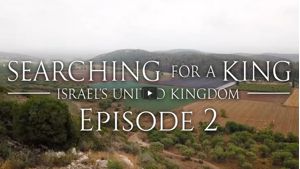

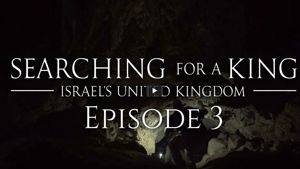

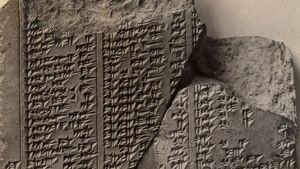

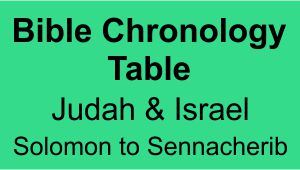
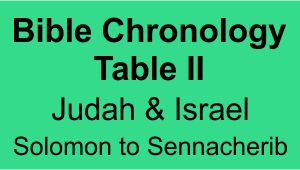
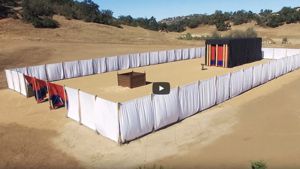
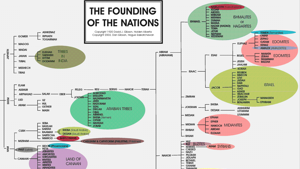

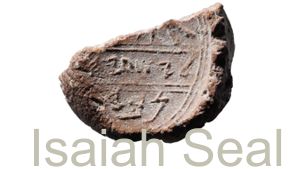
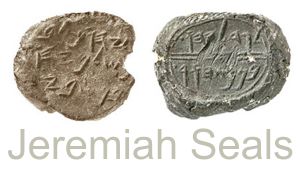




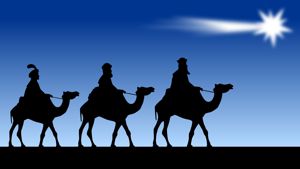


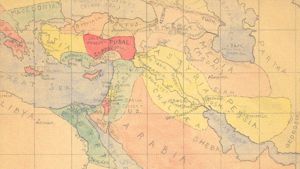
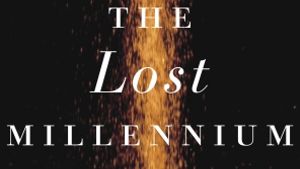

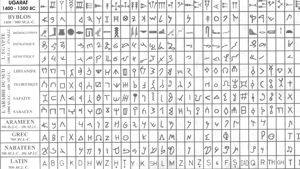
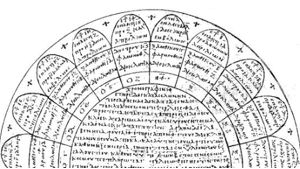
Page Discussion
Membership is required to comment. Membership is free of charge and available to everyone over the age of 16. Just click SignUp, or make a comment below. You will need a user name and a password. The system will automatically send a code to your email address. It should arrive in a few minutes. Enter the code, and you are finished.
Members who post adverts or use inappropriate language or make disrespectful comments will have their membership removed and be barred from the site. By becoming a member you agree to our Terms of Use and our Privacy, Cookies & Ad Policies. Remember that we will never, under any circumstances, sell or give your email address or private information to anyone unless required by law. Please keep your comments on topic. Thanks!